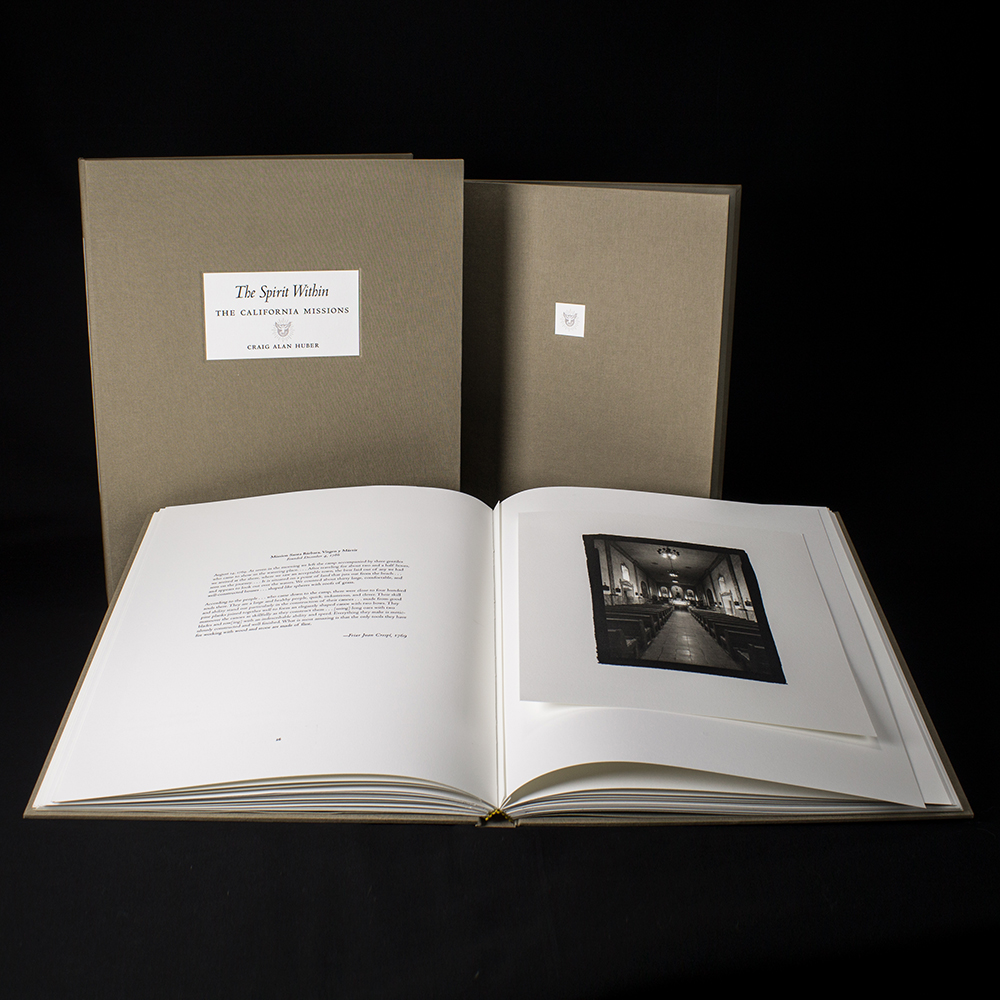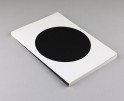Publisher’s Spotlight: Veritas Editions
These past weeks have been all about books on Lenscratch. In order to understand the contemporary photo book landscape, we are interviewing and celebrating significant photography book publishers, large and small, who are elevating photographs on the page through design and unique presentation. We are so grateful for the time and energies these publishers have extended to share their perspectives, missions, and most importantly, their books.
Veritas Editions is dedicated to the truth in beauty, and the beauty in truth. Formed in 2014 by photographic artist Craig Alan Huber, Veritas Editions’ goal is to communicate the message of truth and beauty through the publication of premium limited editions of combined image and narrative. As we live in an increasingly digital, texture-starved world, Veritas Editions brings that texture back into our lives with fine prints, papers, and materials matching the raison d’être of each publication.
In Roman mythology, Veritas, meaning truth, was the goddess of truth, a daughter of Saturn and the mother of Virtue. It was believed that she hid in the bottom of a holy well because she was so elusive. Truth may be elusive, but she is present and worthy of revelation.
Artist/Editor Aline Smithson is in conversation with Publisher/Photographer Craig Alan Huber.
Follow Veritas Editions on Instagram: @veritaseditions
What was the first book you published, and what did you learn from that experience?
Our first publication was actually a calendar printed in duotone on a Komori offset press in King City, California. Being on press for that printing taught us what controls we had while on press, and how important the pre-press stage is, where the digital files are prepared for making the printing plates for offset lithography. Following another calendar in 2015, we took a huge step forward and produced our first Fine Press Edition, which is an entirely different genre of book: “The Spirit Within: The California Missions”. Only 15 numbered copies of this handmade edition were produced, and we learned how to build a collaborative team where the work of every single artisan engaged came together around a strong design to form a whole greater than the sum of its parts.
What is your mission as a publisher?
Veritas Editions is dedicated to the beauty in truth and the truth in beauty. As we live in an increasingly texture-starved world, Veritas Editions is bringing the tactile back via publication of editions flooded with visual and tactile elements. Narrative is another important element to any visual story, providing the context for images to fit into. We make the best possible books we can. We encourage you to take the Veritas Test …hold one in your hands, turn the pages, feel the paper, cloth, fine woods, and immerse yourself in the story.
How big is your organization?
Vertias Editions is run as a sole-proprietorship. Each book is a collaborative effort of usually between 5 and 15 artisans. We seek and obtain the best talent for each aspect of the book, from design to production. These are not direct employees, but rather collaborators, scaling our efforts out in a more flexible fashion than having a team of direct employees.
Are there any publishing projects that have been particularly meaningful to you?
The very first Fine Press Edition on the California Missions holds a special place in my heart, as it proved to us that we could produce such a book by hand, in limited quantities. It also featured the photography of our founder, Craig Alan Huber, who visited all twenty-one California Missions with a 5×7 view camera over the course of seven years, All of the prints in that book, 22 tipped in and 3 loose, were made by Craig in his darkroom – that’s a total of 550 handmade prints. In 2015 it won first prize in the Vermont Center for Photography “By the Books” juried competition. This was particularly meaningful to us, as the juror was Steven Albahari, founder of 21st Editions, the gold standard for contemporary fine press editions featuring photographic art.
What upcoming projects are you excited about?
Now is a pivotal time at Veritas Editions. We began working in 2018 with Kenro Izu on two books, each representing the 50 years he has spent in the US as a native Japanese photographer. His work shows great sensitivity across a range of subjects from figure studies to Noh masks. There will be a Fine Press Edition with original platinum/palladium prints tipped in, as well as a Photobook printed on an offset lithography press in Italy this coming Spring. Then, add on top of those books with Kenro, two new books with Paul Caponigro, who we started working with in June 2020. Paul will also have both a Fine Press Edition and a Trade Press Edition. But this Trade Press will follow the model of a Facsimile of the Fine Press Edition, following the example of Ansel Adams’ “Taos Pueblo” Fine Press Edition in 1930 being re-published by the New York Graphic Society, Boston, in 1977 as a Facsimile Edition. Ansel was able to sign those two editions spanning 47 years. And the cherry on top of the cake is the “LIFEWORK” photobook of George Tice, covering his work for the six decade span from 1953-2013. We are truly honored and blessed to be working with three icons in the world of fine art photography.
How many books do you publish a year, and how do you choose which projects to publish? Do you have a specific focus?
During these formative years, we are averaging about two books a year. While we are bootstrapping ourselves into a self-sustaining funding model, our growth is modest. And it will likely remain fairly modest as we take great care and time with each edition. The projects we publish today are of artists whose work has either been an inspiration for decades, or is a more recent discovery, as is the case with Keron Psillas Oliveira and her beloved Lusitano horses. The only focus we have, if you could call it that, is to publish on topics that bring joy to our lives through beauty. We do not typically have any agenda around social justice … in a way, our books provide a means of escape from our complex lives.
How can an artist get their work in front of you? Do you have any advice for photographers? What is the typical timeline of a project, from the beginning to the finished product?
We are not presently seeking artists to publish, as we have a ‘mental list’ of the next three or four projects to publish first. However, as the typical timeline for a major book project can be 18 to 24 months, it’s never too early to listen to ideas. Artists may contact us through our website. Our only advice for artists is to follow your heart … you know what you have passion for, and that passion will be revealed through your art. If there is a narrative or story that accompanies the subject, all the better for a book project.
How collaborative is the design process with the artist?
Our process is very collaborative, as the design needs to be integral to that art shown. We hire solid designers who know how to produce a design that is unique, tasteful, and complementary to the work of the artist. We want the artist to be pleased with the production when finished, and that starts at the beginning.
How is the financial side of the project structured between publisher and artist? Does the artist contribute to production cost?
The financial arrangement is unique for each project, but in general we operate as a co-op, where the artist pays for half the design and production costs, with Veritas Editions pays the other half. Once out in the market and in a profitable position, the artist and Veritas Editions share equally in the profits.
What support do you give artists in terms of marketing or distribution? Do you attend book fairs?
Oh yes, the marketing and distribution are key! It’s actually easier to create the book than it is to market it and distribute it in some cases. The marketing / distribution deployed depends on the demographics of the audience for a given publication. We have just recently contacted with a major photobook Public Relations agent out of NYC, and are now working with a social media agent to broaden our coverage in those channels. We understand that artists want to create art, and not spend a lot of time marketing it.
Posts on Lenscratch may not be reproduced without the permission of the Lenscratch staff and the photographer.
Recommended
-
Publisher’s Spotlight: Smog PressJanuary 3rd, 2024
-
Publisher’s Spotlight: Kult BooksNovember 10th, 2023
-
Publisher’s Spotlight: ‘cademy BooksJune 25th, 2023
-
Publisher’s Spotlight: Brown Owl PressDecember 10th, 2022
-
Publisher’s Spotlight: DOOKSSeptember 26th, 2022






























































